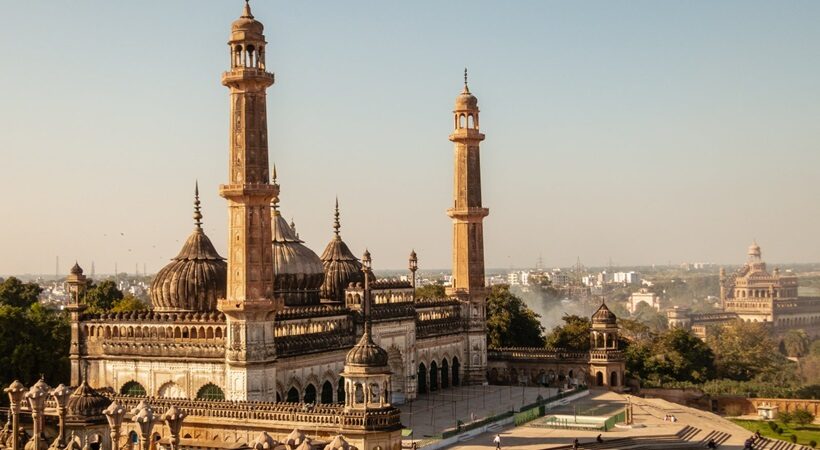The Indo-Islamic style of architecture, also known as Indo-Saracenic architecture, thrived in the Indian subcontinent after the advent of Islam in the region. Notably, the style is unique as it combined native styles of construction and embellishments with the Persian and Arabesque forms to develop a completely distinct form of architecture, which remains influential to this day in Indian administrative buildings. Beginning with the Turkish conquest of northern India, the process of a mix of many structural techniques, stylized shapes and surface decorations came about through constant interventions of acceptance, rejection or modification of architectural elements.
The Indo-Islamic architecture was the culmination of this process. With the epicenter at Delhi, the style found many regional forms in Gujarat, Bengal, Mandu, Deccan, Kashmir and Jaunpur. Working with native artisans with local building materials, the patrons of these magnificent mosques, palaces, and secular structures, borrowed architectural elements liberally from the Indian styles. For example, in the Gujarat style, architectural elements from the Maru-Gurjara style were heavily used such as Toranas, lintels in mihrabs carvings, bell and chain motifs, and carved panels depicting trees for tombs, mosques and dargahs.
Whereas previously working with the brick structure, a highly developed craft of stone masonry in India was used to give form to Indo-Islamic buildings. New elements were also introduced in the subcontinent such as the arches and domes. Using the arcuate form of construction, larger domes and their weight could be supported, whereas earlier arches made of stone and wood were unable to support the weight of domes.
In the Mughal period, which is considered to be the peak of this style, elements of the Indo-Islamic architecture began influencing buildings made for the Hindu populace, such as the use of domes in Hindu temples and scalloped arches. Palace architecture in the subcontinent also had considerable influences on the Indo-Islamic style.
The palaces built during the Mughal time may be different from each other in the plan but they have certain common architectural features, such as balconies supported on carved brackets, pillared kiosks crowned by domes, arcades of sunk arches, foliated arches, latticed screens, curved Bengal roofs and flat domes rising from a rectangular base. As these palaces are often situated on rocky heights, they look very impressive such as those at Amber, Jaipur, Bikaner, Jodhpur, Udaipur, Jaisalmer, etc. Therefore, the India-Islamic style of architecture was the result of constant interaction and negotiation between different styles such as the Persian, Arabic, Turkic and native architectural styles, which influenced each other throughout their evolution and produced architectural marvels such as the Taj Mahal and the Red Fort.



















